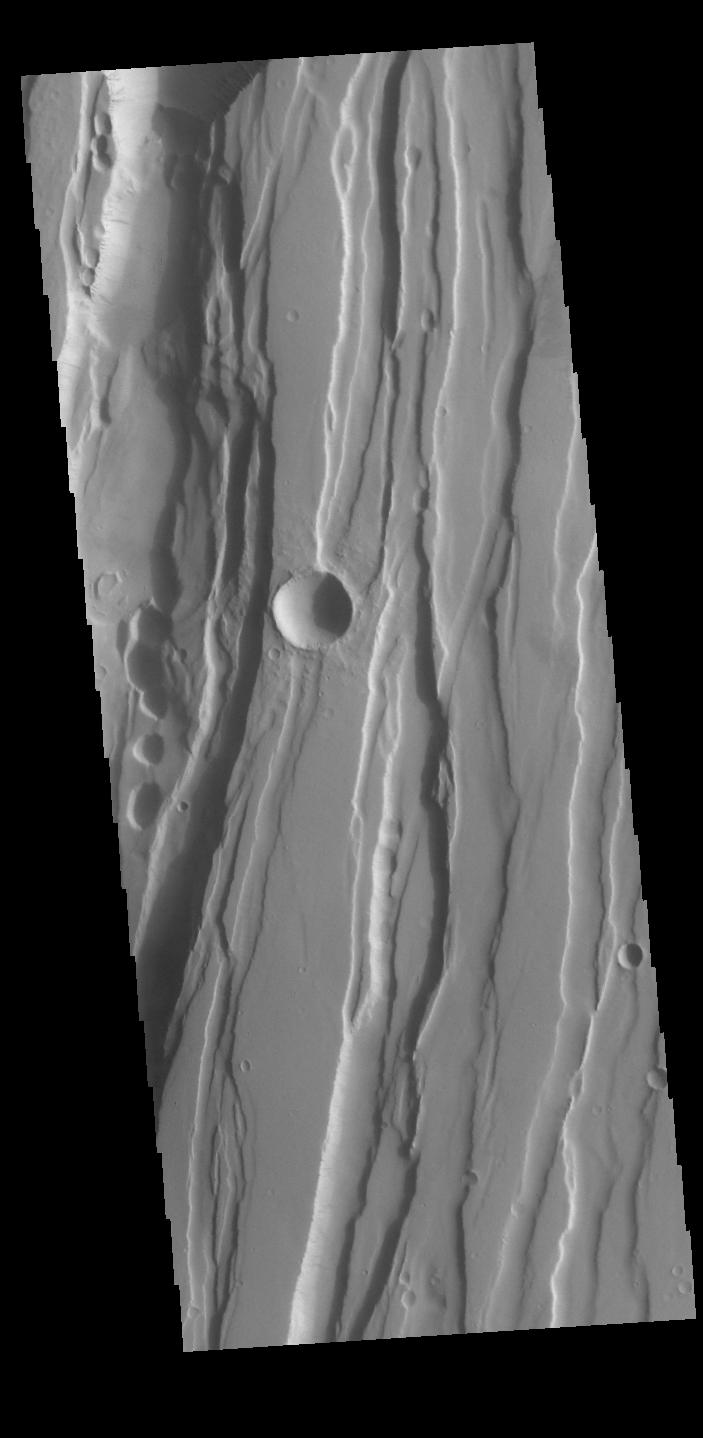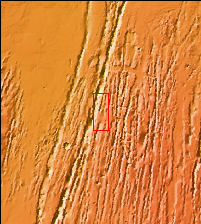
|
Tractus Fossae and Tractus Catena
- Click the image above for a larger view
- Full-Res JPEG (703 x 1438) (66.2 kB)
- Full-Res TIFF (703 x 1438) (706.7 kB)
Caption:

Context image
This VIS image shows part of both Tractus Fossae and Tractus Catena, some of many north/south trending tectonic graben located south of Alba Mons. The deeper depression running vertically on the left side of the image is Tractus Catena. While the other grabens to the right side are Tractus Fossae. The term fossae is defined as a long, narrow depressions, whereas the term catena is defined as a chain of craters. The circular depressions within in the Tractus Catena graben lead to the descriptor name catena. However, in this case the craters are a result of roof collapse into an underlying open space such as a lava tube, rather than a set of impact craters.
Orbit Number: 78231 Latitude: 26.5131 Longitude: 257.336 Instrument: VIS Captured: 2019-08-03 20:38
Background Info:
Please see the THEMIS Data Citation Note for details on crediting THEMIS images.
NASA's Jet Propulsion Laboratory manages the 2001 Mars Odyssey mission for NASA's Science Mission Directorate, Washington, D.C. The Thermal Emission Imaging System (THEMIS) was developed by Arizona State University, Tempe, in collaboration with Raytheon Santa Barbara Remote Sensing. The THEMIS investigation is led by Dr. Philip Christensen at Arizona State University. Lockheed Martin Astronautics, Denver, is the prime contractor for the Odyssey project, and developed and built the orbiter. Mission operations are conducted jointly from Lockheed Martin and from JPL, a division of the California Institute of Technology in Pasadena.
Cataloging Keywords:
| Name | Value | Additional Values |
|---|---|---|
| Target | Mars | |
| System | ||
| Target Type | Planet | |
| Mission | 2001 Mars Odyssey | |
| Instrument Host | Mars Odyssey | |
| Host Type | Orbiter | |
| Instrument | Thermal Emission Imaging System (THEMIS) | |
| Detector | ||
| Extra Keywords | Crater, Grayscale, Impact, Mountain, Thermal | |
| Acquisition Date | ||
| Release Date | 2019-09-18 | |
| Date in Caption | 2019-08-03 | |
| Image Credit | NASA/JPL-Caltech/ASU | |
| Source | photojournal.jpl.nasa.gov/catalog/PIA23457 | |
| Identifier | PIA23457 | |
